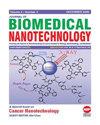Reflux May Weaken Therapeutic Effect of Immune Checkpoint Inhibitors on Head and Neck Squamous Cell Carcinoma: A Proposed Risk Prediction Model Based on LPR/GERD-Related Genes
IF 2.9
4区 医学
Q1 Medicine
引用次数: 0
Abstract
Laryngopharyngeal reflux (LPR) and gastroesophageal reflux disease (GERD) involve in head and neck diseases. Their association with carcinogenesis of head and neck squamous cell carcinoma (HNSCC) has attracted increasing attention in recent years. We established a risk prediction model based on LPR/GERD-related genes (RRGs), to investigate the relationship between LPR/GERD and HNSCC, and explore their relevant mechanisms. To establish the risk model, the TCGA-HNSC project from the Cancer Genome Atlas (TCGA) database was used to conduct training and internal validation assays, and the GSE65858 project and five other TCGA projects involving different kinds of tumors were used to conduct the external validation assays. Twelve RRGs were determined to construct risk signature. Kaplan–Meier curves and receiver operating characteristic curves for the model were used to predict 1-, 3-, and 5-year overall survival (OS), particularly for patients with laryngeal squamous cell carcinoma (LSCC). The proportions of immune cells in high-risk group, including T cells, CD8+ T cells, NK cells, myeloid dendritic cells, B lineage, and monocytic lineage, were significantly lower ( P <0.05). Interestingly, risk score was negatively associated with immune checkpoint-related genes expression. The predicted therapeutic sensitivity of immune checkpoint inhibitors (ICIs) in high-risk group was lower (7.27±1.08 vs. 7.80±1.12, P = 4.6×10 −6 ). Moreover, the predicted IC50 of Erlotinib (EGFR inhibitor) and Parthenolide (NF- κ B inhibitor) was lower in high-risk group ( P = 2.6×10 −12 and 2.7×10 −7 , respectively). LPR/GERD may shorten the OS of HNSCC, especially LSCC. The most important finding from this study is that, the HNSCC patients suffering from LPR/GERD benefit less from ICIs.反流可能削弱免疫检查点抑制剂对头颈部鳞状细胞癌的治疗效果:一种基于LPR/ gerd相关基因的风险预测模型
喉咽反流(LPR)和胃食管反流病(GERD)涉及头颈部疾病。近年来,它们与头颈部鳞状细胞癌(HNSCC)癌变的关系越来越受到关注。我们建立了基于LPR/GERD相关基因(RRGs)的风险预测模型,探讨LPR/GERD与HNSCC的关系,并探讨其相关机制。为建立风险模型,采用肿瘤基因组图谱(TCGA)数据库中的TCGA- hnsc项目进行培训和内部验证,采用GSE65858项目和其他5个不同肿瘤类型的TCGA项目进行外部验证。确定12个RRGs构建风险签名。该模型的Kaplan-Meier曲线和受试者工作特征曲线用于预测1年、3年和5年总生存期(OS),特别是喉部鳞状细胞癌(LSCC)患者。高危组免疫细胞比例,包括T细胞、CD8+ T细胞、NK细胞、骨髓树突状细胞、B系和单核细胞系,均显著降低(P <0.05)。有趣的是,风险评分与免疫检查点相关基因的表达呈负相关。高危组免疫检查点抑制剂(ICIs)的预测治疗敏感性较低(7.27±1.08 vs 7.80±1.12,P = 4.6×10−6)。此外,厄洛替尼(EGFR抑制剂)和帕thenolide (NF- κ B抑制剂)的预测IC50在高危组更低(P分别= 2.6×10−12和2.7×10−7)。LPR/GERD可缩短HNSCC,尤其是LSCC的OS。本研究最重要的发现是,患有LPR/GERD的HNSCC患者从ICIs中获益较少。
本文章由计算机程序翻译,如有差异,请以英文原文为准。
求助全文
约1分钟内获得全文
求助全文
来源期刊
CiteScore
4.30
自引率
17.20%
发文量
145
审稿时长
2.3 months
期刊介绍:
Information not localized

 求助内容:
求助内容: 应助结果提醒方式:
应助结果提醒方式:


